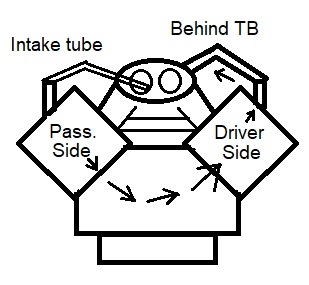Sweet. I will try this as soon as I can. Will any check valve work? Have a link to one?Sorry I don’t have a picture or sketch of the PCV loop on a 3 valve. I do have a simple test for you. Open the hood and start the engine. With the engine idling pull the hose off of the passenger side valve cover. Put you finger over the tube sticking out of the valve cover and you will feel it drawing air into the engine. That’s the air leak I am referring to. Your idle will probably change as you plug and unplug that valve cover tube. What happens is air goes in the engine through the passenger valve cover and out the drivers valve cover, through the catch can and into the manifold. It bypasses the throttle body so the engine hunts to control the idle. A check valve stops that and you will have less oil drawn into the catch can because the airflow is reduced. Win, Win.
Sent from my iPhone using Tapatalk



